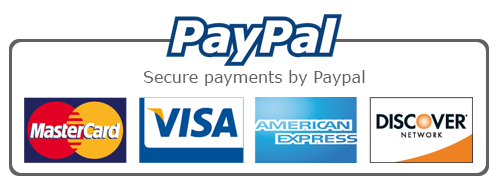Do you know how much internet data your streaming services use? With IPTV services getting more popular, it’s key to manage data consumption for a smooth viewing experience.
Approved IPTV providers use both local and remote storage for video files. This affects data usage. Knowing how to make the most of this can improve your streaming.
As streaming grows, it’s vital to find ways to cut down IPTV data consumption without losing quality.
Key Takeaways
- Understand how IPTV services consume internet data.
- Learn ways to optimize data usage for IPTV.
- Discover the importance of managing data consumption.
- Explore approved IPTV providers’ storage methods.
- Find tips to enhance your streaming experience.
Understanding IPTV and its Data Consumption
IPTV is changing how we watch TV. It streams content over the internet. This technology offers interactivity and personalization but can be tough on slow networks.
What is IPTV?
IPTV means Internet Protocol Television. It delivers TV services over the internet. Unlike old TV methods, IPTV streams content straight to your device.
It offers on-demand content, interactive TV, and streaming on many devices. These features make watching TV more personal and easy.
Why Does Data Usage Matter?
Data usage is key for IPTV users. Streaming high-quality videos uses a lot of data. Going over data limits can cause extra fees or slow speeds.
Common Factors Influencing Data Use
Several things affect how much data IPTV uses. Streaming quality, the type of content, and how many devices are connected matter. For example, HD or 4K videos use more data than SD.
Also, using IPTV on more devices at once increases data use. Knowing these factors helps users control their internet use better.
Assessing Your Current Data Usage
To manage your IPTV subscription well, you need to check your data usage. Watching how much data you use helps you find ways to stream better.
Methods to Track Your Data Consumption
There are many ways to track your IPTV data usage. You can look at your internet service provider’s (ISP) website or app. Many IPTV services also have features to track data use in their apps or settings.
Manual tracking means keeping a record of your streaming and guessing how much data it uses. It’s more work, but it shows you exactly how you watch.
Tools and Apps for Monitoring Data Usage
There are many tools and apps to help with IPTV data usage. You can use network monitoring software, data tracking apps, or smart router features for detailed reports.
GlassWire and NetLimiter are popular tools. They let you watch your data use in real time and alert you if you go over your limit. Using these tools helps you keep track of your data.
Analyzing Usage Patterns
Understanding your IPTV data usage patterns is key. It helps you see how you stream and what uses the most data. This way, you can make choices to improve your streaming.
If you see your data use go up at certain times or with certain content, you can change your streaming quality or schedule. This helps you use your data better.
Choosing the Right IPTV Provider
Finding the right IPTV provider is key to using data wisely and enjoying smooth streaming. There are many providers with different plans. It’s important to know how these plans affect your data use.
Benefits of Efficient Data Plans in IPTV
Efficient data plans help use less data while keeping streaming quality high. Companies like MeloTV and ReloTV have plans for all kinds of viewers. This way, users can watch their favorite shows without using too much data.
These plans often include smart streaming technology. This tech adjusts the stream quality based on your internet. It helps use data better.
How Providers Impact Data Usage
IPTV providers play a big role in how much data you use. They affect this through their encoding, streaming quality, and how they manage content. For example, MeloTV uses smart encoding to cut down on data use without lowering streaming quality.
Comparing Offers from Top Providers
When looking at IPTV providers, check their data plans, prices, and extra features. Top names like MeloTV and ReloTV have plans that vary in data and quality. For instance, MeloTV has a basic plan for standard definition, which uses less data. ReloTV offers a premium plan for high-definition, which uses more.
It’s important to think about how you watch TV and pick a plan that fits your needs. This way, you can use your data wisely and enjoy your favorite shows.
By looking closely at what top IPTV providers offer, you can make a smart choice. This choice will help you enjoy your entertainment while keeping your data use in check.
Strategies to Optimize Your IPTV Experience
Improving your IPTV experience is key for smooth streaming and less data use. You can adjust settings, manage content, and use new tech to do this.
Adjusting Streaming Quality
Changing the streaming quality is a top way to better your IPTV. Most providers let you pick from different qualities. This way, you can choose between better video and less data use.
Lowering the quality can really cut down on data, which is great for those with small data plans. For example, going from HD to SD can save a lot of data.
Some IPTV services adjust quality based on your internet. Make sure your device and internet match the service for the best streaming.
Scheduling and Content Management
Planning when you stream can make your IPTV better. Streaming during quiet times can avoid network jams.
Also, think about what you stream to save data. Streaming music uses less data than videos. Downloading shows for offline viewing can also help, if your provider allows it.
Using a VPN for Better Performance
Some people use a Virtual Private Network (VPN) to make IPTV streaming better. A VPN can stop your ISP from slowing down your stream.
But, pick a VPN made for streaming. Not all VPNs work well for IPTV, so choose wisely.
Tips for Reducing Data Usage with IPTV
IPTV users can watch their favorite shows without using too much data. A few simple steps can help. By being smart about data use, you can cut down on your IPTV internet usage.
Setting Data Limits on Devices
Setting data limits on devices is a great way to control IPTV data use. Smart TVs and streaming devices let you set data caps. This stops your IPTV from using too much data, even when you’re watching a lot.
To set data limits: Go to your device’s settings, find the data usage or network section. Then, set a data limit that fits your monthly allowance or preference.
Recommendations for Data-Saving Settings
Changing the streaming quality is another smart move to save data. Lowering the quality means less data used. IPTV services offer different qualities, from SD to 4K.
To save data: Pick a lower quality that still looks good. For example, switching from HD to SD can save a lot of data.
Investing in Data Cap-Friendly Plans
For those who stream a lot, getting a data cap-friendly plan is wise. Some ISPs have plans with more data or no limits. This way, you can stream without worrying about extra charges.
When selecting a plan: Think about how much you stream and pick a plan that fits. It’s smart to compare plans to find the best deal.
The Future of IPTV and Data Usage
IPTV technology is growing, and knowing how it affects data usage is key. New trends in IPTV, like better encoding and adaptive bitrate streaming, will change how we use data.
Advancements in IPTV Technology
New encoding and adaptive bitrate streaming are coming. These will help IPTV providers give better streams without using more data. This makes IPTV a smarter choice for users.
Rising Consumer Awareness
It’s important for users to know how to manage their IPTV data. By understanding their watching habits and picking the right plan, they can cut down on data use.
Shaping Data Consumption Practices
As IPTV tech gets better, how we use data will change. Keeping up with IPTV news and adjusting watching habits will help users enjoy IPTV more while using less data.
FAQ
What is IPTV and how does it work?
IPTV, or Internet Protocol Television, streams TV content over the internet. It sends TV programs and videos through broadband connections. This lets users watch content on smart TVs, smartphones, and computers.
How much data does IPTV use?
IPTV data use varies based on several factors. These include streaming quality, content type, and devices connected. On average, it uses 1-3 GB per hour for SD content. HD content uses 3-6 GB per hour, and 4K content uses 7-10 GB per hour.
What factors influence IPTV data consumption?
Several factors affect IPTV data use. Streaming quality, content type, device, and concurrent streams are key. Higher qualities like 4K use more data than lower qualities like SD.
How can I track my IPTV data usage?
You can track IPTV data use with tools and apps from your IPTV or internet service provider. Many IPTV apps also have built-in data tracking features.
What are some tips for reducing IPTV data usage?
To cut IPTV data use, lower the streaming quality and limit streams. Use data-saving features from your IPTV provider. Setting data limits on devices and choosing data cap-friendly plans also help manage data.
How do I choose an IPTV provider with efficient data plans?
Look for IPTV providers with good data plans, quality options, and content. MeloTV and ReloTV offer plans for different needs. Compare providers to find the best data plan for you.
Can using a VPN affect my IPTV data usage?
Using a VPN might increase IPTV data use due to encryption. But, some VPNs can improve IPTV performance. This can indirectly affect data usage by reducing buffering and improving stability.
What are the benefits of efficient data plans in IPTV?
Efficient IPTV data plans reduce consumption and lower bills. They also provide a smoother viewing experience. Choosing a data-friendly plan lets you enjoy content without worrying about data use.
How will IPTV data usage evolve in the future?
Future IPTV technology will improve data compression and streaming quality. Consumer awareness and trends will shape IPTV data use. There will be a focus on optimizing data consumption and developing efficient plans.




